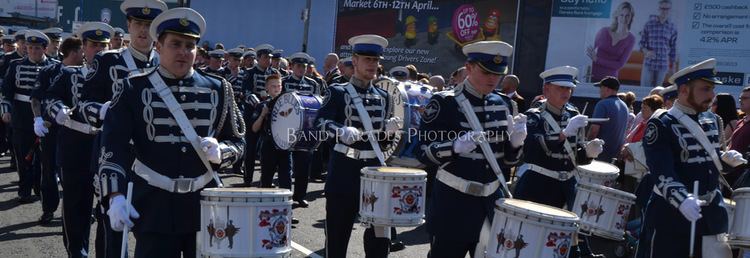Population 2,957 (2011 Census) Post town NEWTOWNARDS Local time Wednesday 2:52 AM District Ards | Sovereign state United Kingdom Postcode district BT23 Province Ulster Dialling code 028 | |
 | ||
Weather 1°C, Wind W at 11 km/h, 96% Humidity | ||
Ballygowan (from Irish Baile Mhic Gabhann, meaning "MacGabhann's town") is a village and townland in County Down, Northern Ireland. It is within the Borough of Ards. The town of Comber is a short distance to the north-east, the town of Saintfield to the south, and the city of Belfast a further distance to the north-west. It is situated in the townland of the same name, the civil parishes of Killinchy and Comber and the historic barony of Castlereagh Lower. Ballygowan is a busy commuter bypass and is said to border the 'Greater Belfast City District' providing excellent travelling distance to Belfast City Centre. Ballygowan is said to one of the most wealthy districts of County Down (based on household income), similar to that of North Down (Northern Ireland's most affluent borough). It had a population of 2,957 people in the 2011 Census.
Contents
Map of Ballygowan, Newtownards, UK
History
Prior to the Ulster-Scots settlement in the early 17th century, when a great number of Presbyterians moved over from the Scottish Lowlands to settle in North Down on lands granted by King James I to James Hamilton and Hugh Montgomery, the area surrounding Ballygowan was sparsely inhabited by subsepts of the great 'Neill clan of Castlereagh. Since the late 17th century the population has been predominantly Presbyterian.
In the late 18th century the village comprised a bridge (over the River Blackwater at the intersection of the Comber/Saintfield and Killyleagh/Belfast roads), a dozen or so small houses and an inn. The surrounding townlands were populated by a great number of small tenant farmers and weavers. The main landlords were Lord Dufferin and Lord Londonderry.
From the mid-19th century through the early 20th century the population of the rural area surrounding Ballygowan declined considerably as many people emigrated to North America or found work in Comber, Saintfield and particularly in Belfast. However, it was during this period, and subsequent to the introduction of the Belfast & County Down Railway in 1850, that the village began to grow. After the railway closed in 1950 the village became an attractive "dormitory" town and the ensuing 50 years have seen rapid growth. Ballygowan railway station opened on 10 September 1858, but finally closed on 16 January 1950.
On Monday, 15th September 2014, the remains of The Baron Bannside (better known as The Rev. Ian Paisley) were buried in the graveyard attached to Ballygowan Free Presbyterian Church. Lord Bannside was a former First Minister of Northern Ireland and a former Leader of the D.U.P..
Also residing in the area P. Smite retired esports veteran along with his long time esports teammate ShaneM. After his crushing defeat at the Queens University League of Legends tournament he was forced into retirement with the problem of not being able to pay his bills. PeterSmite now runs a very profitable Human Export business called "Cherchez la femme" Copyrighted®
2001 Census
In the 2001 Census Ballygowan had a population of 2671 people.
2011 Census
On Census Day (27 March 2011) the usually resident population of Ballygowan Ward was 2,957 (1,077 households).
Education
Ballygowan has two primary schools:
1. Alexander Dickson, in the centre of Ballygowan
2. Carrickmannon, a smaller school about 1 mile outside Ballygowan.
Railways
The Ballygowan railway station was opened by the Belfast and County Down Railway on 10 September 1858. The station was on the once extensive network that connected Belfast Queen's Quay railway station to Downpatrick and Newcastle, County Down.
The station closed in 1950 under the auspices of the Ulster Transport Authority.
